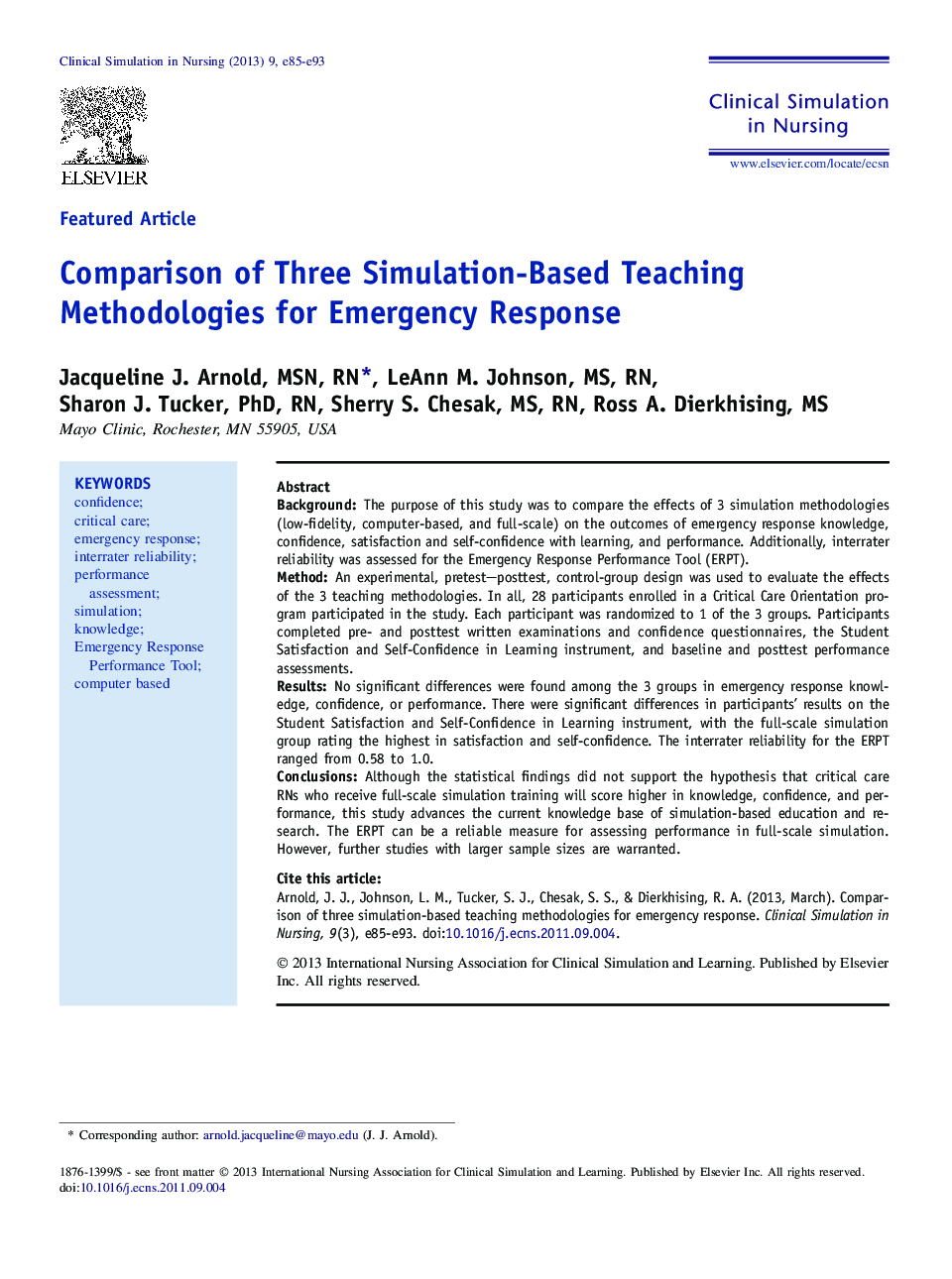| Article ID | Journal | Published Year | Pages | File Type |
|---|---|---|---|---|
| 2646530 | Clinical Simulation in Nursing | 2013 | 9 Pages |
BackgroundThe purpose of this study was to compare the effects of 3 simulation methodologies (low-fidelity, computer-based, and full-scale) on the outcomes of emergency response knowledge, confidence, satisfaction and self-confidence with learning, and performance. Additionally, interrater reliability was assessed for the Emergency Response Performance Tool (ERPT).MethodAn experimental, pretest–posttest, control-group design was used to evaluate the effects of the 3 teaching methodologies. In all, 28 participants enrolled in a Critical Care Orientation program participated in the study. Each participant was randomized to 1 of the 3 groups. Participants completed pre- and posttest written examinations and confidence questionnaires, the Student Satisfaction and Self-Confidence in Learning instrument, and baseline and posttest performance assessments.ResultsNo significant differences were found among the 3 groups in emergency response knowledge, confidence, or performance. There were significant differences in participants' results on the Student Satisfaction and Self-Confidence in Learning instrument, with the full-scale simulation group rating the highest in satisfaction and self-confidence. The interrater reliability for the ERPT ranged from 0.58 to 1.0.ConclusionsAlthough the statistical findings did not support the hypothesis that critical care RNs who receive full-scale simulation training will score higher in knowledge, confidence, and performance, this study advances the current knowledge base of simulation-based education and research. The ERPT can be a reliable measure for assessing performance in full-scale simulation. However, further studies with larger sample sizes are warranted.
